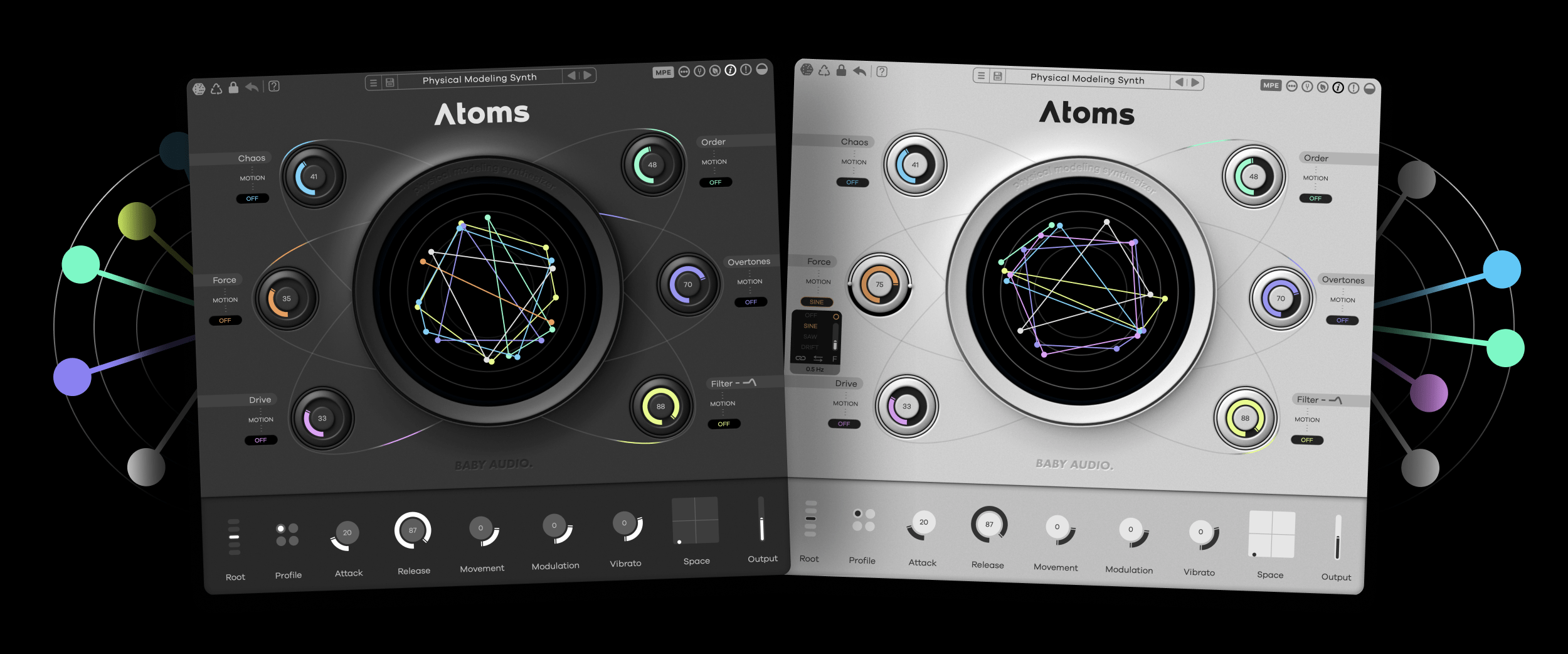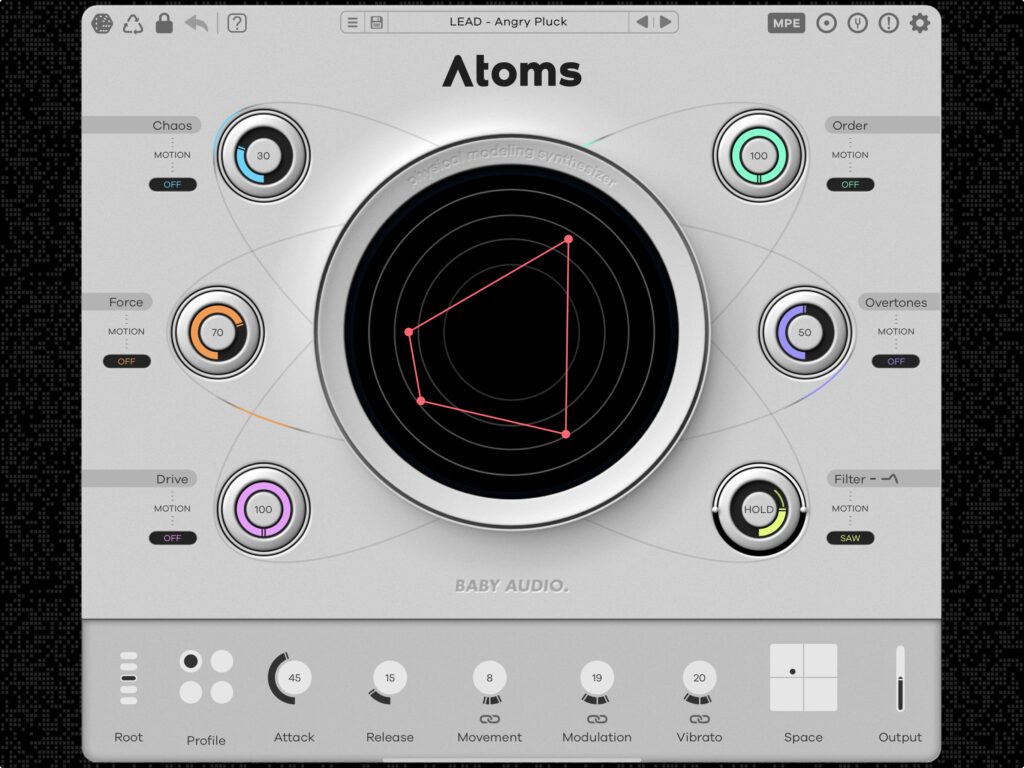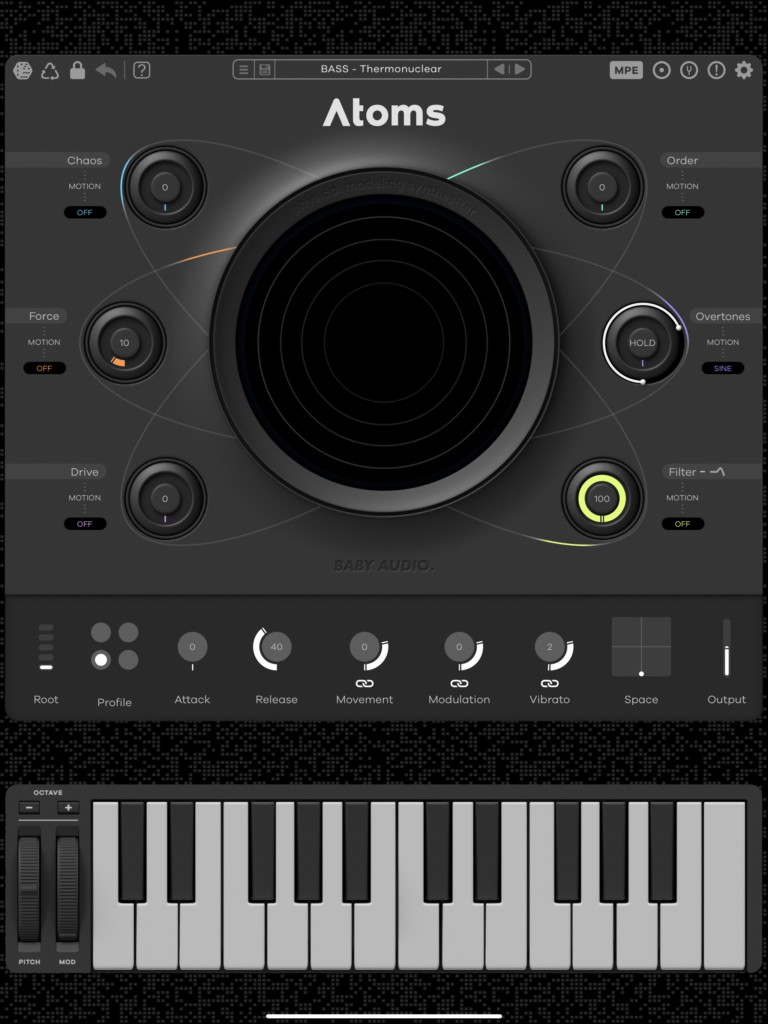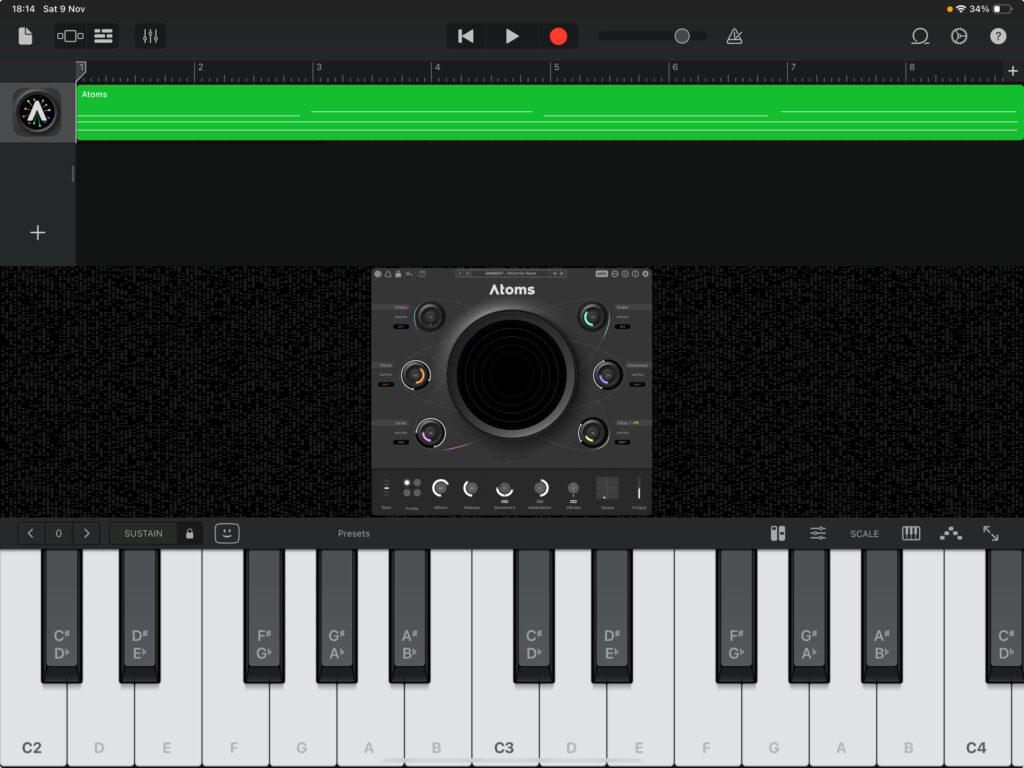
Atmospheric, cinematic, unique and bonkers are all words i’d use to describe Baby Audio’s latest iOS App release, Atoms Synthesizer.
A physical modeling synthesizer, Atoms is (for better or worse) a straight up port of the plugin Baby Audio released on desktop back in February.
Weird ambient soundscapes are 100% my jam and Atoms absolutely excels at that kind of stuff.
Think MOOG’s Animoog Z, but somehow deeper, more powerful and altogether stranger.
Baby Audio say: “Atoms is a new kind of synth plugin that uses cutting edge physical modeling to generate an endless variety of organic and otherworldly sounds.
Physical modeling simulates the behavior of real life instruments. But Atoms takes you beyond what’s possible in the natural world. Its features are deep enough to explore the outer bounds of sound design, yet so simple that you can easily mangle, shape and create.
Atoms is powered by a simulation of interconnected masses and springs with tweakable properties and dimensions. The model is triggered by a virtual bowing action that excites the system and makes it vibrate to generate sound.”
Attractive Interface
Atoms has a great looking and easy to navigate interface.
The first thing you’ll notice is the large visualizer in the center of the UI. This graphical display gives you visual feedback on the behavior of the ‘mass-spring’ systems under the App’s hood.
There are six controls around the centre display that you can use to shape Atom’s sound; Chaos, Order, Force, Overtones, Drive and Filter.
Each of these controls allows you to tweak different elements of how you ‘play’ Atoms. The Force control for example, adjusts how hard Atom’s virtual ‘bow’ will ‘play’ its virtual springs. The Drive control increases harmonic clipping and the Filter control acts as a more traditional Low Pass Filter.
All of these controls can be independently automated using four distinct automation types.
Atoms also features a range of physically modeled effects. You can quickly adjust the octave range of your current patch with the Root control, introduce Modulation and Vibrato effects and fine tune the on board reverb with a very responsive X/Y pad.
Another feature to keep in mind is the randomization button in the top left of the interface. During testing, I often found myself forgoing the included presets altogether, choosing to instead tap the randomizer and then adjusting the random sound Atoms served up.
Speaking of presets, Atoms comes with 250 presets created by industry-leading sound designers. This includes the free expansion pack “Radioactive” by Zardonic, which explores the darker and more twisted sides of the instrument.
While browsing this madcap selection of sonic oddities is often exciting and enjoyable, traversing Atom’s presets is hampered by the minuscule fonts and hard to hit buttons used. While these smaller fonts and controls are easy enough to click with a mouse pointer in the desktop version of Atoms, on smaller iPad and iPhone screens it can be a frustrating and inaccurate experience. Strange, as efforts have been made to enlarge controls elsewhere in the App.
Interface Issues
As incredible as Atoms sounds, the move to the iOS platform hasn’t been particularly kind to it.
Baby Audio have opted to have no on-screen keyboard visible when using the App in standalone mode.
Or so I thought.
It wasn’t until I tried turning my iPad from landscape orientation to portrait that an on screen keyboard appeared at the bottom of the screen.
I could probably count on one hand how many iPad/iPhone musicians use their devices to actually make music in portrait mode, so it is an incredibly bizarre decision to only have an on screen keyboard present while in this orientation.
I reached out to Baby Audio about this issue and was surprised when they did in fact confirm that hiding the App’s on screen keyboard when the user’s iPad or iPhone is in landscape orientation is completely intentional. An external MIDI controller is practically mandatory to get the most out of Atoms on iOS.
What’s worse, loading Atoms as an AUv3 instrument in GarageBand and setting it to full screen also hides GarageBand’s on screen keyboard. The keyboard only appears when toggling full screen off, which unfortunately shrinks Atom’s UI down to a tiny size.
This results in an infuriating workflow of having to set the App to full screen, select or edit your sound (without being able to actually play it using your iPad/iPhone’s touch screen) before switching back from full screen and then playing/recording.
While I understand that this is a port of a desktop plugin, these issues could have been easily addressed, especially as Baby Audio’s previous synthesizer port (the excellent BA-1) didn’t suffer from these problems.
Is it worth it?
From a pure audio design standpoint, Atoms is fantastic.
As someone who really enjoys creating huge cinematic drones and evolving, organic pads, the sounds you can squeeze out of this App are nothing short of incredible.
On iOS though, Atoms is severely hamstrung by its poor touch implementation and how it behaves as an AUv3 instrument in other host Apps.
I’d go so far as to warn iPhone users in particular to stay away from this App completely until such a time as Baby Audio rework how users interact with its interface on smaller screens.
iPad users on the lookout for a unique and powerful ambient powerhouse will find a lot to love in Atoms, though you’ll likely want to attach an external MIDI keyboard or controller to mitigate it’s frustrating UI shortcomings.
Review copy supplied by Baby Audio
Baby Audio Atoms Synthesizer for iOS is available for an intro price of $19.99/£19.99. Usual Price $29.99/£29.99. Get it from the iOS App Store HERE.




